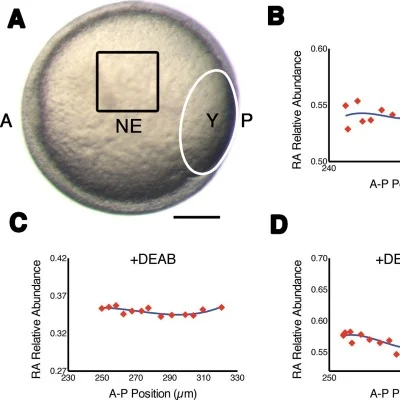Using cutting-edge imaging technology, biologists at University of California, Irvine have determined that uncontrolled fluctuations (known as “noise”) in the concentration of the vitamin A derivative Retinoic acid (RA) can lead to disruptions in brain organisation during development.
Identifying how a cell responds to a signal made by another cell, despite the level of noise present, may improve our understanding of developmental disorders, according to Thomas F. Schilling, professor of developmental and cell biology.
Dr Schilling and his colleagues, published this study online at eLife.
During development, RA is an important secreted molecule that aids in the proper organisation of the brain. The cellular response to RA depends upon its concentration, which is determined by its production, movement through tissue and interactions with many proteins within the cell. During normal development, cells can filter the “noise” in RA levels and establish appropriate brain organisation. Schilling and study lead author Julian Sosnik wanted to measure the fluctuations in RA and determine how cells respond to the proper amount despite the presence of constant noise.
To accomplish this, they used fluorescence lifetime imaging to exploit the auto-fluorescent nature of RA and measure its distribution across the developing zebrafish embryo. The team found that RA forms a gradient in the embryo, with a lower concentration at the head. They also observed that a large amount of noise exists within the RA gradient.
They identified one protein within developing cells that interacts with RA to help reduce the noise. When this protein was altered, cells could no longer control the level of noise within the RA gradient, which led to disruptions in brain organisation.
With this, the researchers concluded that noise reduction within cells is critical for the proper response to the RA gradient and normal organisation of the brain.
They concluded that future studies will employ new transgenic technologies to examine levels of noise in the expression of genes responding to RA in developing brain cells and address potential beneficial roles for noise in helping switch cells from one type to another in this system.
Source: University of California, Irvine
Journal Reference:
Julian Sosnik, Likun Zheng, Christopher V Rackauckas, Michelle Digman, Enrico Gratton, Qing Nie, Thomas F Schilling. Noise modulation in retinoic acid signaling sharpens segmental boundaries of gene expression in the embryonic zebrafish hindbrain. eLife, 2016; 5 DOI: 10.7554/eLife.14034










